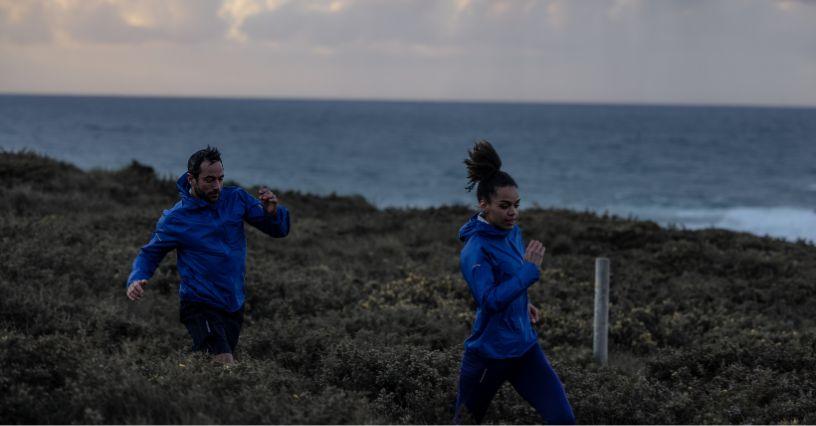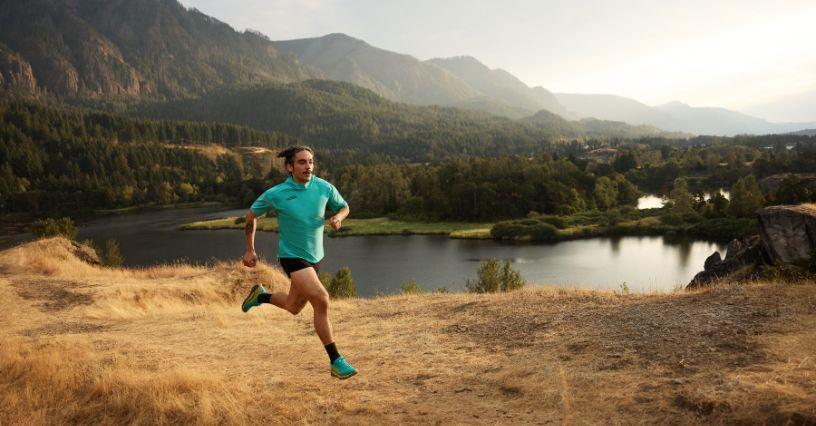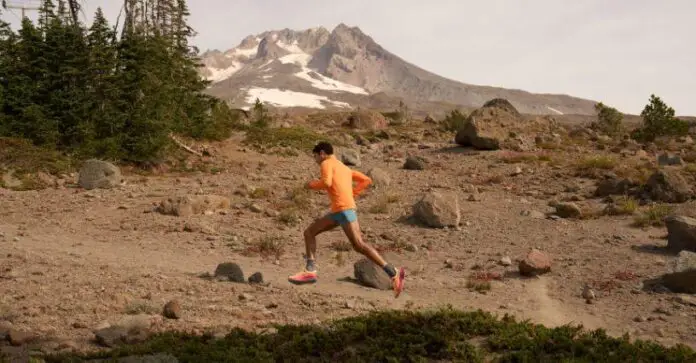Trail running is a form of physical activity that combines the passion for running with hiking on trails and being close to nature, so it will be ideal for all those who want to escape the monotony of paved roads or park paths.
If you want to start a trail running adventure, but you are not sure how to prepare for this challenge, we will clear your doubts in this article. Regardless of your running experience, we’ll give you the advice and inspiration you need to hit the road and discover the joy and satisfaction of trail running.
Trail running – what is it?
Trail running, or trail running or cross-country running, is a form of running that takes place on natural, often difficult and challenging terrain, such as paths, trails, mountain trails and other off-road areas.
This means that trail runners have to deal with rough terrain, different types of hills, steep descents and many obstacles encountered during training, including:
roots, rocks, mud or water. Trail running gives you the opportunity to explore new trails surrounded by beautiful nature, enjoy dynamic terrain and push your body’s limits.
Rough terrain running vs. running on asphalt
The differences between running on land and running on asphalt are considerable. Paved trails are more stable and quiet, while trail runs are run on variable and varied surfaces.
The trail terrain is more technical, requiring more concentration and the ability to deal with obstacles. Running on tarmac can get monotonous after a while, while trail running offers a variety of scenery and challenges.
In addition, trail running also has a different effect on the body. Due to the variable and uneven terrain, the muscles and joints are engaged more, which has the effect of strengthening the whole body.
Trail running is also more joint-friendly because the ground absorbs shock and reduces stress. Running on asphalt, on the other hand, is more even, offers access to usually familiar landmarks so you don’t have to worry about getting lost, and can be more demanding on your joints.

The benefits of cross country running
First, trail running engages different parts of the body, including the abdominal, back, leg and arm muscles. Rough terrain requires more stabilization of the body, which activates the stabilizing muscles and improves the sense of balance.
In addition, trail running increases joint flexibility and mobility, improving range of motion.
Trail running is also an excellent fitness workout that strengthens the cardiovascular system and improves physical condition.
During trail running, you experience a higher intensity workout than when running on asphalt, which leads to a higher calorie burn and improved overall physical performance.
Running surrounded by nature also has a positive impact on mood and mental health. You slow down, disconnect from everyday stress and completely immerse yourself in the nature around you.
It’s a great way to relax and calm down. Because of the many challenges that can await you when you run in the countryside and have to face them, you also gain more confidence, learn to cope with different situations and solve problems.

Who is trail running suitable for?
Trail running is great for people who enjoy a challenge, adventure and contact with nature. This form of running appeals to both beginners who want to try something new and seasoned runners looking for challenge and inspiration. If you like to get in touch with nature, want to tackle technical trails and are looking for an alternative to running on asphalt, trail running could be the perfect sport for you.
Contraindications for trail running?
Although there are many benefits of trail running, there are some factors that can contraindicate it. First, if you have serious health problems, such as heart disease, joint disease, or other conditions, you should consult your doctor before starting this form of running.
It is important to be aware of your health and not expose yourself to unnecessary risks. It is essential to gradually introduce trail running into your training, starting with easier routes and gradually increasing the intensity and difficulty of this type of physical activity.

Equipment for trail running. Basic equipment
Trail running shoes are one of the most important pieces of equipment for a cross country runner. This should have good grip and cushioning to provide stability and protection for joints on rough terrain. When choosing trail shoes, look for an outsole that offers grip on rocky or muddy trails. In addition, trail shoes should be lightweight yet durable to withstand the demands of rugged terrain. What else will you need for trail running?
Field running outfit
For trail running, the best outfit will be one that offers comfort and protection from all weather elements. Choose light and breathable fabrics that effectively remove moisture from the body, dry quickly and, at the same time, provide high thermal comfort.
Additionally, when riding on rough terrain, especially on long trips, opt for a layered clothing system, including a lightweight rain jacket or softshell, to adapt your outfit to changing weather conditions.
It’s also worth looking into protective gear such as knee pads or elbow pads, which can be useful when running on more difficult trails. Reflective elements are an important part of outdoor running gear to increase your visibility after dark or in inclement weather.
Accessories for trail running
In addition to shoes and clothing, there are many accessories that can make trail running more comfortable. It’s a good idea to choose a backpack equipped with multiple pockets to store essentials such as your phone, snacks or maps.
A good choice would be backpacks with tanks, which will allow you an easy supply of liquids during the run, ensuring adequate hydration during the effort.
A headlamp will also come in handy, especially if you’re planning to hike longer routes and expect to be outdoors after dark. In addition, it is worth completing your outdoor running kit with trekking poles, which, among other things, will make it easier for you to overcome steep approaches.

How to start running on the field? Top tips
- If you’re a beginner runner, gradually increase the distance and intensity of your workouts, giving your body time to adjust. Choose routes that suit your fitness level and training goals. You can start with flat terrain or easy hills and then gradually choose more difficult routes that will test your skills.
- Remember that trail running involves slightly different muscle groups than running on flat asphalt. Incorporate strength training into your program to help strengthen your legs, abs and back, improving stability and fitness for trail running. Also pay attention to running technique. On rough terrain, it is essential to maintain your balance and flexibility of movement. Focus on bending your knees, proper foot placement, and maintaining body stability.
- Before you hit the road, make sure you have gear to keep you from getting lost, such as a GPS watch or smartphone with a route tracking app. It’s also a good idea to pack a map and compass in your backpack, which can come in handy when your electronics break down.
- Remember that it’s always a good idea to let your loved ones know about the route you plan to take and the expected duration of your workout. This will increase your safety and, in case you need help, those around you will know where to look for you.
- Prepare for training by taking water or isotonic drinks with you to keep your body hydrated. It is also important to provide your body with adequate nutrients. On longer runs, it’s a good idea to have snacks like energy gels, bars or dried fruit with you to give you extra energy during your workout.
- Don’t forget to finish your training and recovery properly. After a trail run, it’s worth taking care of muscle recovery and fluid replenishment. Eat a meal rich in protein and carbohydrates to aid the recovery process. And don’t forget stretching and relaxation exercises to help relieve muscle tension and prevent accidents.



